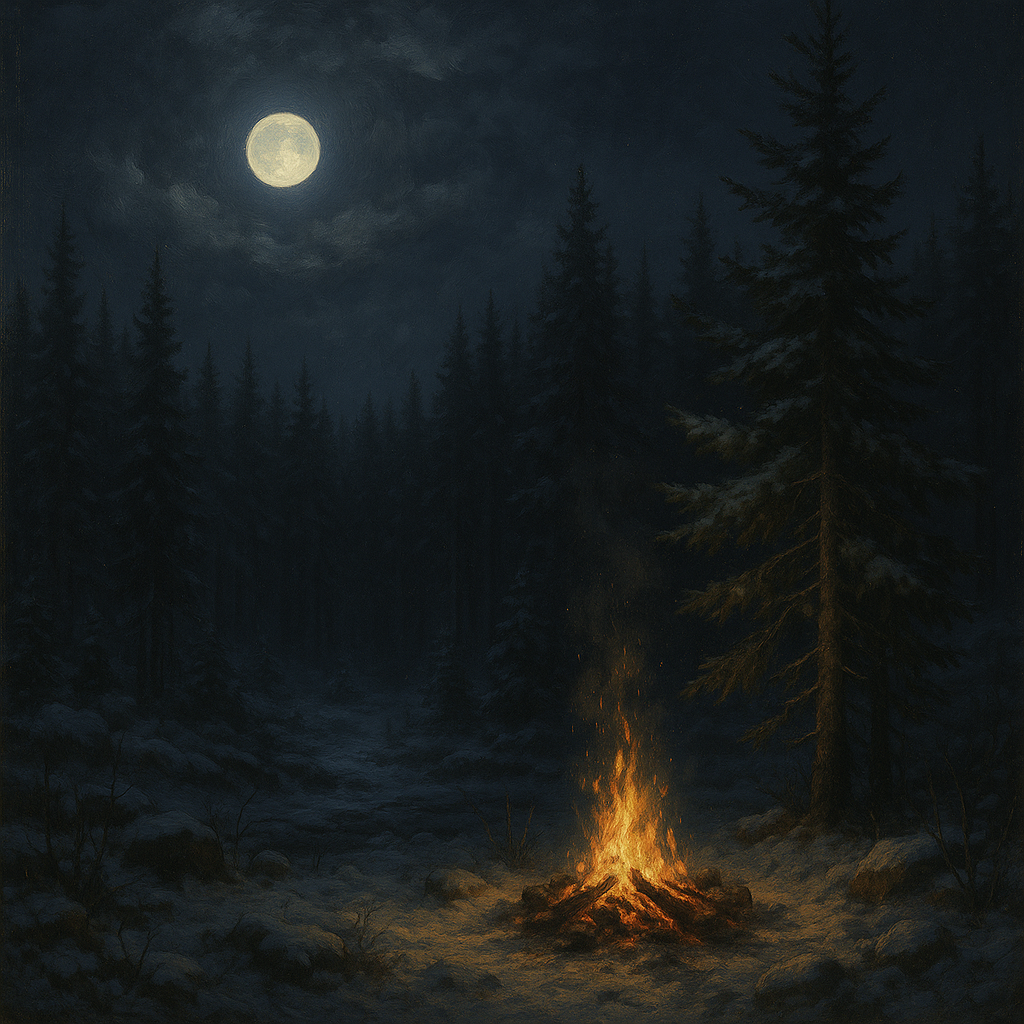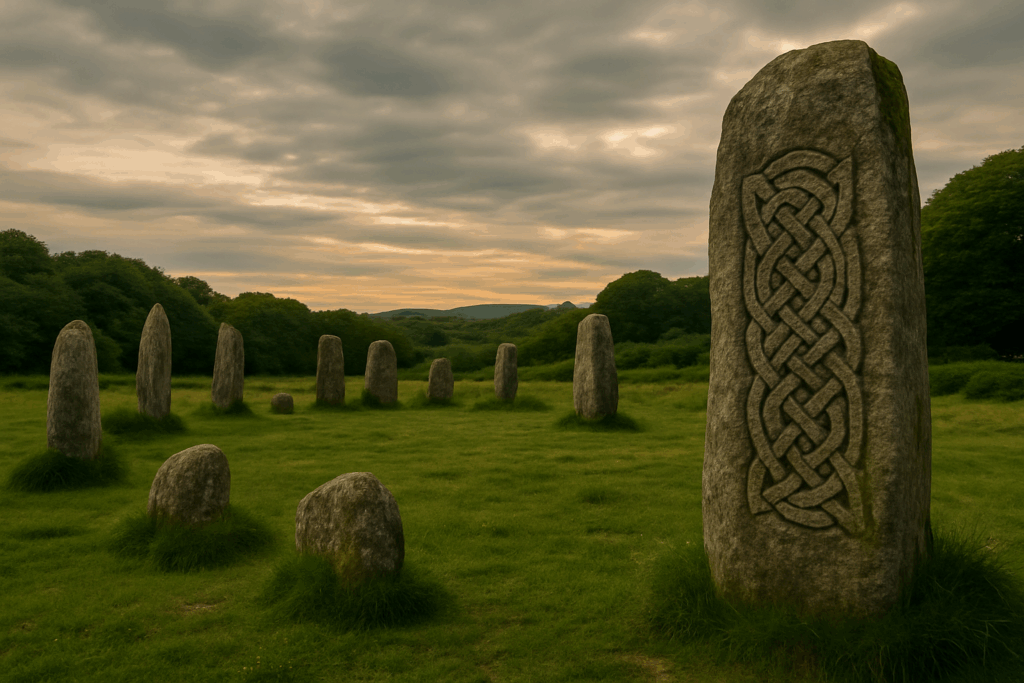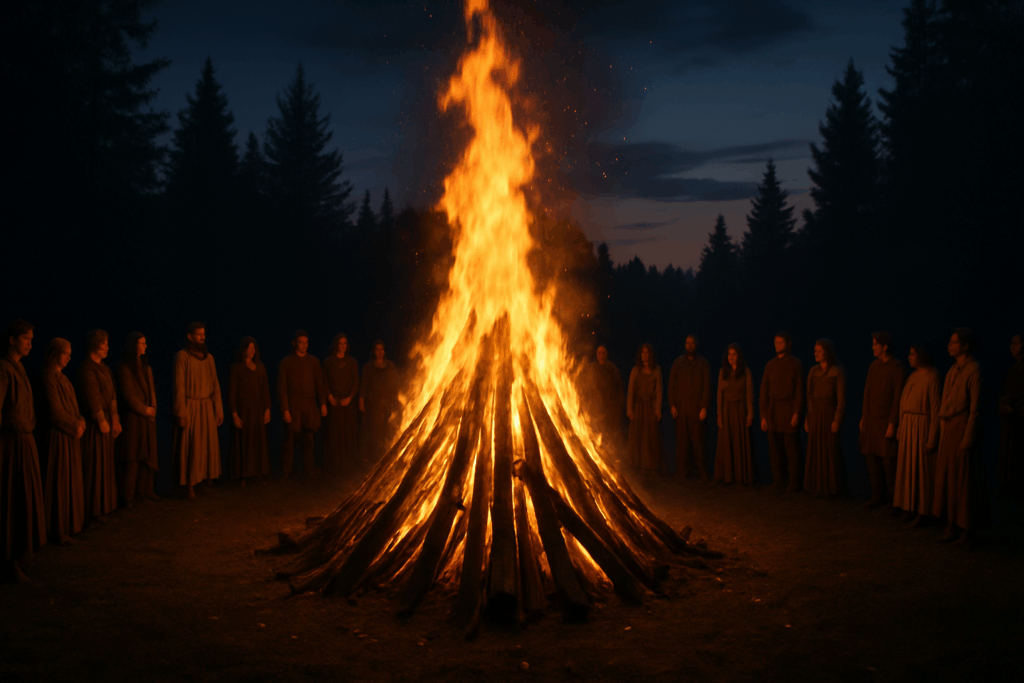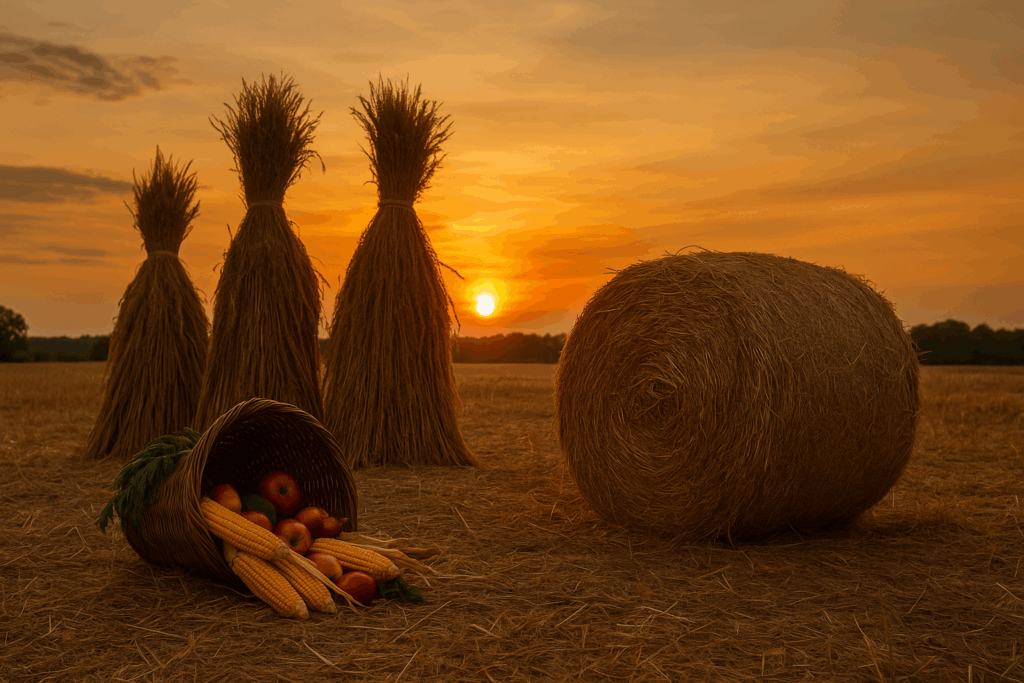🌑 November 1 – Ashes of the Samhain Fire

Honoring what has ended; carrying embers of transformation into the dark.
There comes a stillness after the fire, a moment when the crackling ceases and the air hangs thick with smoke and memory. Samhain, the great turning of the Celtic year, has burned through its threshold—its sacred fire a beacon to the ancestors, a signal to the living that the light wanes and the inward path begins. The ashes of that fire now lie cool upon the ground, soft as dust and yet heavy with meaning. They are not remnants of something lost, but vessels of what has been transmuted. This is the day after—the first step into the long night of ancestral quiet. On this day, we gather not to reignite the blaze, but to tend its embers within the chambers of our hearts.
The Ashes of the Samhain Fire mark both an ending and a beginning. The ancient Celts saw Samhain not as a single night but as a liminal season—a thinning of the veil between the worlds, a passage from life into the dream of winter. When the fires of Samhain were lit upon hilltops and hearths, they served as both protection and offering: flames to honor the spirits of the departed, and to guide the living safely through the shifting tides of unseen realms. As the festival closes, the ritual fire that once roared with the names of ancestors now fades to embers. These ashes, dark and fine, are sacred dust. To gather them is to hold in your hands the story of all that has burned away—grief, fear, worn-out habits, attachments that no longer serve. To honor them is to acknowledge the transformation that has occurred through the fire’s alchemy.
In many traditions, ashes are a symbol of both mortality and renewal. In the ashes of what was, new soil is born. The old wood becomes the foundation of the next forest; the fire that devours also prepares the earth for new life. The ancients knew this, and so they kept a portion of the Samhain ashes within the hearth as a charm against the cold and as a remembrance that from destruction comes creation. To hold the ashes of the Samhain fire is to accept that change is not a wound but a wheel—that endings, when met with reverence, spiral naturally toward beginnings. The ash upon the fingers is not a sign of loss but a sacred mark of continuation.
There is a quiet ritual to be made today, one that does not require words or ceremony but presence. Step outside, if you can, into the cool air of early November. The world feels hollowed, emptied of its noise, the trees stripped to bone. Gather a small handful of ash—real or symbolic—and feel its texture, its softness. Reflect on what has ended for you in this cycle: relationships, beliefs, ambitions, or simply a phase of your own becoming. Offer gratitude for what these things taught you, and then, as you breathe upon the ashes, imagine that the heat of your breath rekindles the spark of what still lives within them. The ember of wisdom, of strength, of resilience—this is what you carry forward. This is what remains when the fire has done its work.
The days ahead grow darker, and the instinct to draw inward grows stronger. But within that darkness lies the seed of profound transformation. The ashes remind us that the dark is not an absence of light, but its gestation. Just as a seed cannot sprout beneath the blaze of the sun, the soul cannot renew itself without the quiet of the shadowed months. November begins not with fanfare, but with surrender—the kind of surrender that trusts the cycle of nature and spirit alike. In this stillness, we learn to listen again. The fire’s voice becomes the whisper of the ancestors, urging us to rest, to remember, to release.
In mythology, ashes often accompany rites of passage. The Phoenix, that timeless bird of flame, is reborn from its own ashes. So too are we invited to rise—not immediately, but in time, when the lessons of the flame have cooled into wisdom. Today is not a day for flight; it is a day for reflection. The ashes teach patience, humility, and endurance. They tell us that the beauty of transformation lies not in the blaze itself, but in what follows—the quiet reconstruction of the self in alignment with what has been purified by fire. Every time we let go of what no longer serves, we participate in this sacred act of combustion. Every time we honor the ashes rather than discard them, we honor the process by which the soul renews itself.
Spiritually, the Ashes of the Samhain Fire invite us to tend the inner flame through introspection. As the outward fires fade, the inward fire begins to glow. It is the light of awareness, the hearth of consciousness that warms the dark chambers of the spirit. In the old ways, people would take home a coal from the communal Samhain fire to relight their hearths—a symbolic act of carrying the collective flame into private sanctuaries. Today, this act can be mirrored through meditation, journaling, or quiet contemplation. We carry forward the lessons of the year, the strength of community, the wisdom of endings. We become the keepers of our own sacred flame, sustaining it through the coming months of silence and snow.
The ashes are also an offering to the ancestors. In their smoke, their scent, their color, we glimpse continuity—the way every generation leaves behind the dust of its experience, which then becomes the foundation of the next. To honor the ashes is to honor all who came before: those who lived, burned brightly, and returned to the earth. It is to see ourselves as part of the same sacred continuum. Our lives, too, will one day become ashes in the hands of those who follow, and that truth is not sorrowful but beautiful. It is the great rhythm of being—the eternal exchange between fire and soil, spirit and flesh, life and death.
So let this day be one of reverence. Let it begin the long descent into the inward winter, guided not by fear of darkness but by respect for the transformations that darkness brings. Keep a small vessel of ashes, if you wish—a reminder that within every ending lies the seed of new fire. Light a candle beside it, and watch how the flame dances above the dust. That dance is the dialogue between death and renewal, between what was and what is yet to be. The ashes speak softly, but their wisdom endures through every season of shadow and light.
The Ashes of the Samhain Fire are not merely a symbol of the past—they are a map for the soul’s renewal. They teach us to walk forward into November not with haste, but with reverence, carrying the smoldering ember of transformation through the gathering dark. In time, when Yule approaches and the light begins its slow return, that ember will kindle anew. But for now, it rests—alive within the ash, dreaming of rebirth.




